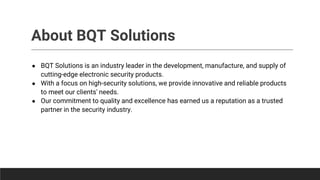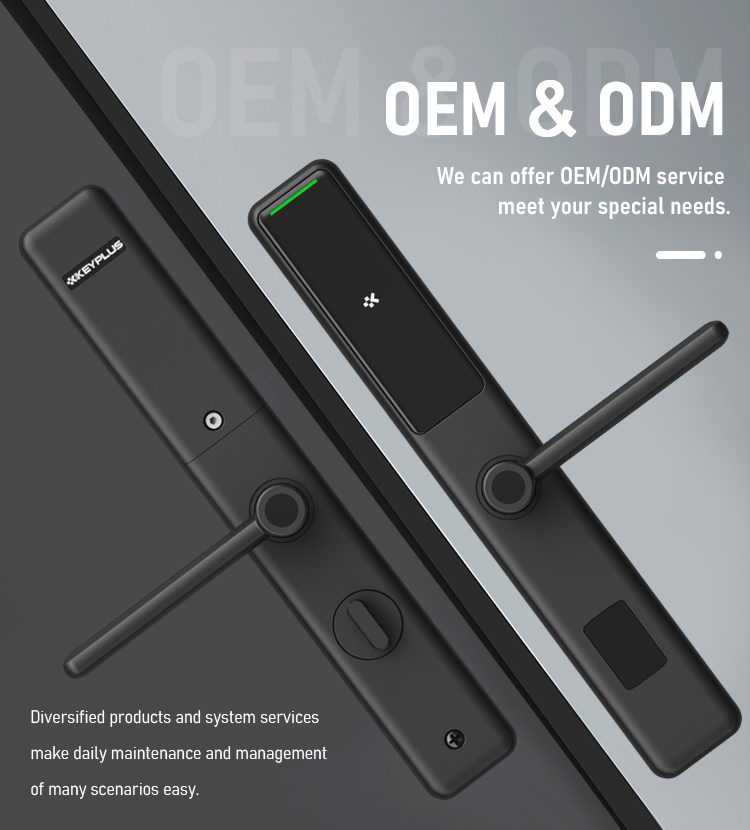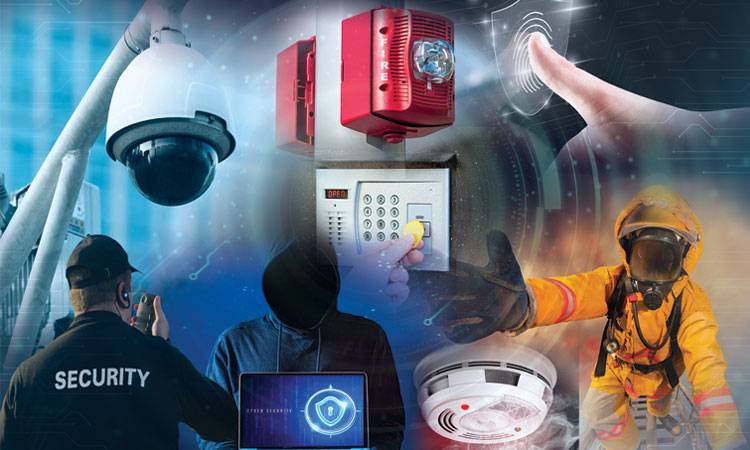How Leading Access Control Systems Manufacturers Are Revolutionizing Security Equipment
How Leading Access Control Systems Manufacturers Are Revolutionizing Security Equipment
Blog Article
Checking Out the Duty of Gain Access To Control Equipment in Enhancing Security Devices Performance and Efficiency
Accessibility control systems are progressively identified as vital components in the landscape of protection administration, giving a structured method to control access to delicate areas and info. Their capacity to integrate with different safety and security innovations, such as surveillance cams and alarm system systems, dramatically improves the total performance and effectiveness of safety procedures.
Comprehending Accessibility Control Systems
Gain access to control systems play a vital function in ensuring the safety and security of various settings, from business offices to sensitive government centers. These systems regulate who can go into or leave an assigned location, thereby shielding properties and sensitive details. The fundamental components of gain access to control systems consist of permission, authentication, and recognition procedures.
Recognition involves confirming a person's identity, usually via qualifications such as essential cards, biometric data, or passwords. When identified, authentication verifies the person's right to accessibility, often through multi-factor verification approaches to boost protection. Last but not least, permission determines the degree of accessibility given, enabling distinguished authorizations based on functions within the organization.
Gain access to control systems can be categorized right into 2 major types: rational and physical. Physical gain access to control pertains to concrete areas, while logical gain access to control governs digital information systems. Both kinds function synergistically to supply extensive security solutions.
Integration With Protection Technologies
The assimilation of accessibility control systems with other safety and security technologies is crucial for producing a holistic safety and security atmosphere. By integrating gain access to control with video clip monitoring, intrusion detection, and alarm system systems, companies can enhance their overall safety and security pose. This interconnected framework permits real-time tracking and rapid feedback to safety and security cases, boosting situational understanding and functional performance.
As an example, integrating accessibility control with video clip monitoring makes it possible for safety and security personnel to confirm access events visually, making certain that just accredited people are approved entry. When accessibility control systems are linked to alarm systems, any type of unapproved access efforts can set off immediate alerts, triggering speedy action.
In addition, the combination of access control with cybersecurity actions is progressively crucial in securing sensitive information and physical assets. By lining up physical security protocols with IT security systems, organizations can make sure that both digital and physical gain access to points are kept an eye on and controlled effectively.
Advantages of Enhanced Safety And Security Procedures

In addition, enhanced protection procedures help with real-time tracking and occurrence feedback. With integrated systems that include monitoring electronic cameras, alarms, and accessibility controls, safety groups can promptly determine and deal with prospective hazards. This proactive method more helpful hints permits prompt interventions, minimizing the chance of security breaches and prospective losses.
In addition, efficient security operations add to a society of safety within the organization. Employees are likely to really feel even more protected when they recognize that durable actions are in place, bring about enhanced morale and productivity. The use of data analytics from access control systems makes it possible for organizations to examine protection trends, boost plans, and allocate sources properly.
Obstacles and Considerations

Additionally, organizations should deal with the potential for information violations. Accessibility control systems usually deal with delicate details, and any type of vulnerabilities can reveal this information to unapproved accessibility. access control systems manufacturers. Guaranteeing durable cybersecurity measures is essential to protect against such risks
Individual sites training is one more critical factor to consider. Workers must understand exactly how to utilize accessibility control systems effectively, as improper use can cause safety and security spaces. Additionally, organizations have to stabilize safety with user comfort; excessively restrictive gain access to can impede performance and cause workarounds that endanger safety and security protocols.
Compliance with lawful and regulatory demands is also paramount. Organizations has to make sure that their accessibility control systems satisfy industry criteria and neighborhood laws, which can read here differ considerably. Ultimately, the ongoing maintenance and monitoring of these systems require specialized sources, making it essential for companies to allot appropriate budget plans and employees to ensure lasting effectiveness and efficiency.

Future Fads in Accessibility Control
Anticipating the future of access control exposes a landscape significantly formed by technical developments and evolving safety and security requirements. One considerable trend is the integration of artificial knowledge (AI) and machine learning, which improve decision-making abilities and automate threat detection. These technologies enable real-time evaluation of accessibility patterns, allowing even more adaptive and receptive protection steps.
Biometric authentication is also getting traction, with innovations in finger print, face acknowledgment, and iris scanning innovations supplying enhanced safety and security and customer convenience. As these systems come to be more affordable and innovative, their fostering across different markets is expected to climb.
An additional arising trend is the change towards cloud-based access control systems. These remedies give scalability, remote management, and centralized data storage space, permitting companies to improve operations and improve effectiveness.
Furthermore, the Internet of Things (IoT) is set to reinvent gain access to control by allowing interconnected tools to connect and share data, consequently enhancing situational awareness and safety responsiveness.
Verdict
In conclusion, access control systems significantly boost the effectiveness and effectiveness of safety equipment by assisting in precise identification, authentication, and consent processes (customized security solutions). Their assimilation with surveillance and security system fosters a proactive safety and security environment that addresses potential violations in real-time. While difficulties and factors to consider exist, the ongoing development of access control innovations assures to further improve protection procedures. Inevitably, these systems are important to guarding sensitive areas and information within organizations, guaranteeing a durable protection framework.
Accessibility control systems are increasingly acknowledged as crucial elements in the landscape of protection administration, supplying a structured technique to manage accessibility to delicate locations and info. Physical access control pertains to tangible places, while rational gain access to control regulates electronic details systems.The integration of accessibility control systems with various other safety technologies is necessary for creating an alternative safety and security atmosphere. Gain access to control systems usually take care of sensitive information, and any vulnerabilities could reveal this data to unauthorized gain access to. Organizations must stabilize protection with customer comfort; excessively limiting accessibility can impede productivity and lead to workarounds that compromise security procedures.
Report this page